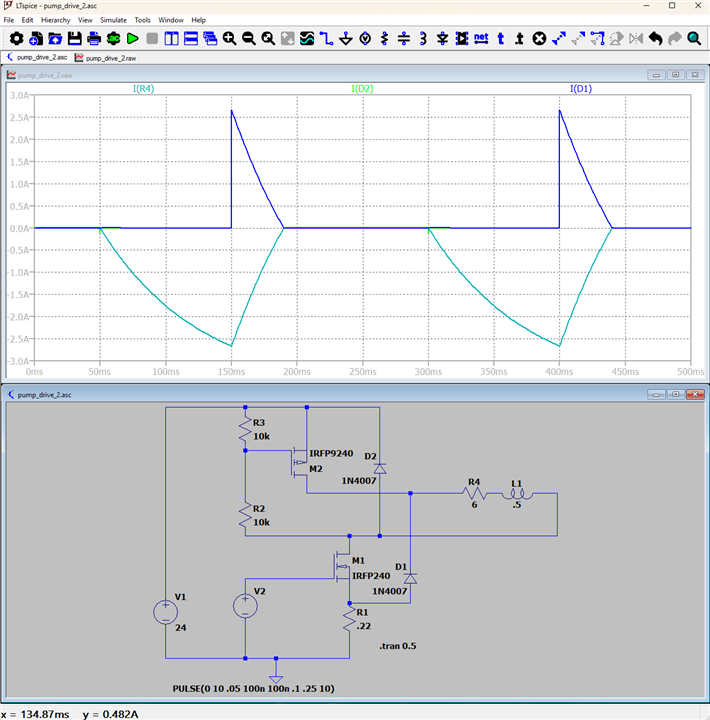Hello Friends,
I am working on servicing a circuit board that is used in a Medical Dental sterilizer. The circuit boards used in this model of sterilizer seem to have a chronic problem with a circuit that drives a reciprocating water pump. Here is a schematic of the circuit that fails:

My question is what is the advantage to using this circuit configuaration to drive the pump? The gate of the N CH MOSFET turns on and pulls one leg of the load to the negative rail and also turns on the P CH MOSFET about 20 microseconds later pulling the other leg of the load up to the positive rail. While this seems to work quite well it seems to me to be an added complication to be switching both legs of the load. I am hoping for some insight into what the advantage might be in using this configuaration. The Rds (on) of the N CH is about 60 milli Ohm and the Rds of the P CH is about 13 milli Ohm. While I am not certain this is probably a Pulsed circuit as I suspect that the pump needs a Pulsed drive to properly function. My hope is that in better understanding the advantages of this circuit design I might be able to modify it to lower the present failure rate. Failure is usually a shorted P CH Mosfet, A Heat Destroyed N CH MOSFET and a Shorted D26 Diode.
Any insights you may have will be appreciated.
John

